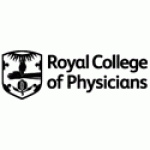How you can use this image
This image is available to be shared and re-used under the terms of the Creative Commons Attribution-NonCommercial-NoDerivatives licence (CC BY-NC-ND).
You can reproduce this image for non-commercial purposes and you are not able to change or modify it in any way.
Wherever you reproduce the image you must attribute the original creators (acknowledge the original artist(s) and the person/organisation that took the photograph of the work) and any other rights holders.
Review our guidance pages which explain how you can reuse images, how to credit an image and how to find more images in the public domain or with a Creative Commons licence available.
DownloadNotes
Add or edit a note on this artwork that only you can see. You can find notes again by going to the ‘Notes’ section of your account.
Robert Hooper (1773–1835) studied medicine at London, Oxford and St Andrews universities, and became a successful teacher of the practice of medicine. He settled in London, and for many years taught a large class. He was also interested in pathological anatomy, and accumulated a large and very valuable collection of morbid specimens. Hooper was a man of immense industry, a sound practical physician, and a good writer, and was well respected by his contemporaries. Two of his writings, the 'Physician's Vade Mecum' and his 'Compendious Medical Dictionary' (1798) are still popular today. Hooper also worked as physician at the Marylebone Infirmary, and had a very long and lucrative career there. The portrait was painted in 1813 by Philip Reinagle, an English animal, landscape and botanical painter.
Title
Robert Hooper (1773–1835)
Date
1813
Medium
oil on canvas
Measurements
H 114.3 x W 137.2 cm
Accession number
X191
Acquisition method
gift from an anonymous relative, 1934
Work type
Painting

